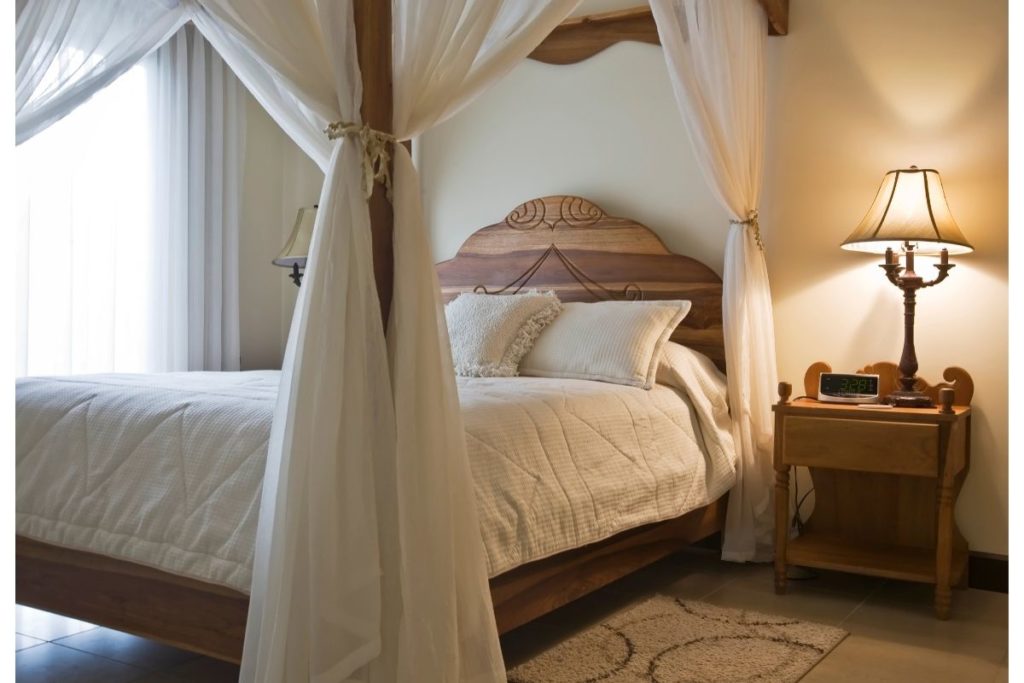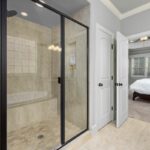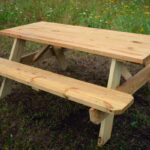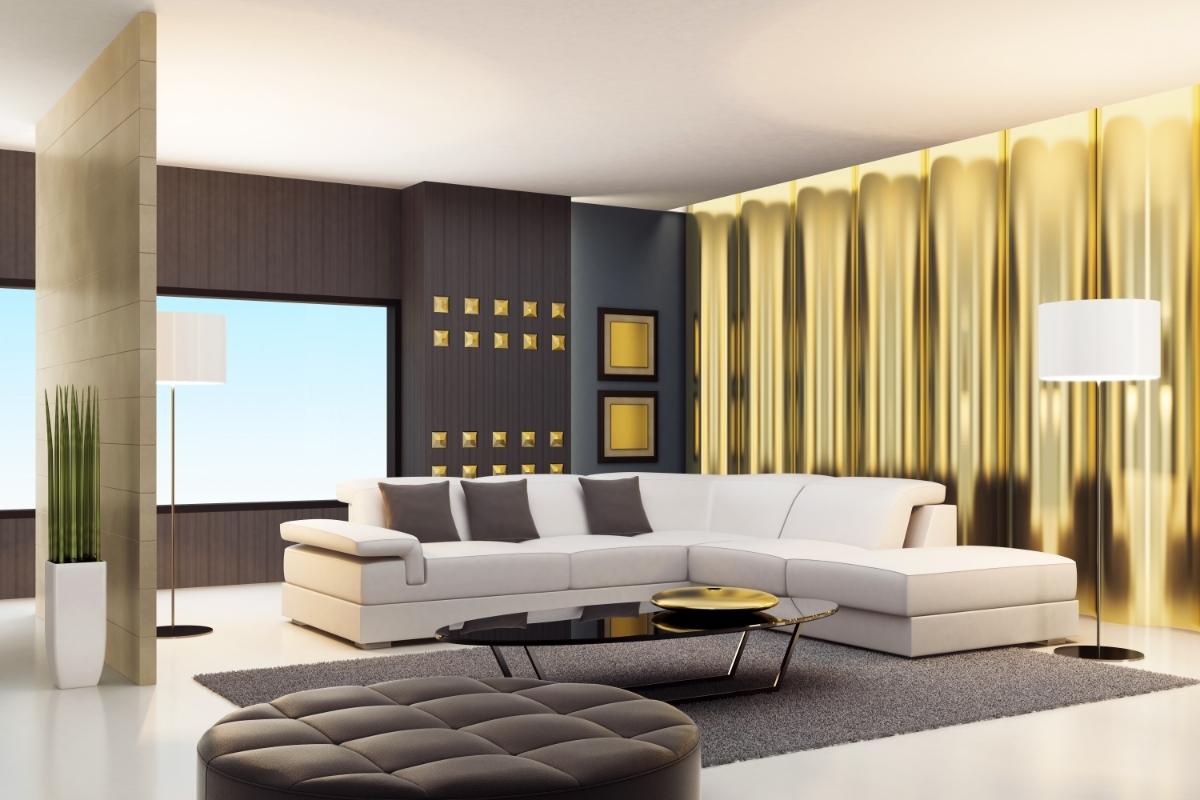The average person will spend about 33 years of our life in bed, with seven of those spend trying to get to sleep in the first place. This information shows the importance that beds have in our lives, so it’s worth learning a bit more about them as they are a bit more complex than most of us would’ve thought.
In this guide, we will cover the 13 different parts of a standard bed, starting from the bottom up. Then, we will go into a bit more detail about the different types of beds and how they are built in different ways.
Box Spring
We will start off with the box spring which is the base of the bed at the bottom that supports the mattress which is why they are often of similar size.
They used to have big thick springs that would dig into you after a few years but have now been replaced with wooden slats with a cloth cover. The box spring is put on top of a bed frame which acts as a brace, securing it in place.
Cleats
Cleats make up the base of the bed and can have two functions, the first function is to make the bed more comfortable and the other one is to act as the base for both the bed and frame. The cleats also act as a stand for the cut slats which is why some people say that they are of the same part.
Cut Slats
The cut slats lie across the bed and can be added to make your mattress more stable, therefore the more slats you have the more support your mattress will have. They are usually cut to match the width and length of the bed and overlap the screen at the base.
Legs
This part of the bed is self-explanatory, they are the parts of the bed that extend downwards from all four corners in order to raise the bed off of the ground. However, not all beds have legs, and some will lie completely on the ground.

Footboard
The footboard has multiple functions, to keep your bedding in place and to look good. They used to be made to protect those that were sleeping in the bed from cold drafts as well as prevent the duvets and sheets from sliding off. Recently, however, they are primarily designed to be aesthetically pleasing rather than practical.
Footboard Slat
A footboard slat is shorter than a headboard slat and is set lower so that you can tell more easily which end of the bed is the head and which one is the foot. It joins to the end of the frame in order to support the footboard top rail.
Footboard Top Rail
The footboard top rail looks like a horizontal panel that is attached to the top of the footboard slat. This is another part of the bed that has a lot of decorative purposes, but it is also has a practical use which is to prevent duvets and sheets from sliding off.
Bottom Front Rail
This is much like the footboard top rail but instead, it is attached to the bottom of the footboard slat.
Side Rails
Side rails are the parts of the bed that are installed on either side, sometimes they are there to keep small children safe in their bed but in the average bed, they do not come up past the mattress but are still positioned quite close.
Bed Side Rail
This type of side rail is the one that runs horizontally to the ground and is there to support the bed all the way from the headboard to the footboard. If you have a bed that allows for storage underneath, the side rail can act as a cover.
Bottom Side Rail
This type of side rail is positioned at the bottom of the bed and is parallel to the bedside rail. These can also help with providing coverage for things that are stored underneath the bed as they are essentially the same as a bedside rail but are just placed lower. They run from the headboard to the footboard and can be made from either metal or wood.
Headboard
This is probably one of the most defining features of any bed as it is the first thing you see when you walk into the room. It can be designed in various ways in order to be aesthetically pleasing, but they also provide a function.
Before people had access to heating in their homes, headboards were added to protect their heads from getting cold. However, now that heating is widely accessible, headboards are not needed in the same way, but they can still protect your head from hitting off of the wall as you sleep.
They also prevent your pillow from falling off of the head of the bed as well and if they are padded, they provide even more comfort.

Headboard Slat
The headboard slat is attached to the back of the bed frame and is a vertical grid or set of slats that provide the foundation for the headboard.
Headboard Top Rail
This is the part of the headboard that lies in horizontal pieces across it. The headboard slat and the headboard top rail work together to make up the most important parts of the headboard.
Headboard Cross Rail
The headboard cross rail is positioned below the headboard slat and attaches to the bed and the headboard slat so that it can hold onto it from the base which makes it very sturdy.
Headboard Leg
This part of the headboard is where the headboard slat is supported on both sides. The headboard leg is also there to ensure that the headboard stays at the right height.
Different Types Of Beds
As well as singles, doubles, and queens, did you know that there are up to 70 different types of beds?
You are probably wondering why there are so many when the standard bed is good enough for most of us, different beds are more suitable depending on the situation such as living space and mobility.
Here are just a few of some different types of beds that you have likely come across before but maybe didn’t realize.
Daybed
The daybed is a bed that is built to have multiple purposes. If you have a limited living space than you would be best off with a daybed as it looks much like a half of a couch with one side having the headboard extend all the way along it. They are usually the size of a twin bed but can be bigger or smaller.
They are attractive to look at and since they look like a couch, they can be treated as such when the daytime rolls around which saves you having to make space for both a bed and a couch instead of just one daybed.
Murphy Bed
The Murphy bed is another great option for those who don’t have a lot of space to spare as it can fold up into the wall when you’re not using it. This gives you a lot more space in the daytime which is a massive advantage to a lot of people but unfortunately, the Murphy bed has a bit of a bad reputation.
This is due to Charlie Chaplin where he featured himself getting swallowed up by one in a short film but if you are using it properly, there are very safe, and you won’t have to worry about being eaten by one. The bed should be mounted by a professional into the wall to ensure that it is secure and moves correctly and is designed to not fold up into the wall while you are still on it.
Four-Poster Bed
Invented in the 15th century, the four-poster bed takes center stage as soon as you walk into the room because they are so big and grand. As the name suggests, a four-poster bed has long posts on all four corners that extend towards the ceiling.
You can use these posts to hang curtains from that you can drop when you are sleeping for extra privacy and coziness. It also helps to keep the sunlight off of you before you wake up if you like to have a lie in sometimes. If you use curtains that are made from a thicker material, they will also help keep the surrounding heat insulated which is great in the colder months.
Not only are they incredible to look at, but four-poster beds are also very durable and strong. You will need a good bit of space available though as they are quite big, but you are guaranteed to have a bed for life.
Canopy Bed
Canopy beds are quite similar to four-poster beds in the way that they have long posts on all corners of the bed, but the canopy bed has one main difference as the posts are then connected again at the top to allow you to cover the whole bed instead of just the sides like a four-poster bed.
If you do decide to put heavy drapes over your canopy bed, keep in mind that it will be harder to maintain as it can get a bit dusty up there if you don’t keep on top of it. This is one of the reasons why four-posters are preferred over canopy beds.
There is a modernized version of the canopy bed which is known as the half canopy bed which only had a canopy at the head of the bed instead of one that is covering the entire thing.

Bunk Bed
You may already be familiar with what a bunk bed is, especially if you grew up with siblings and had to share a room. It usually consists of two single-sized beds being layered on top of one another with a ladder attached in order to get to and from the top bunk.
Sometimes the lower bed will be a double bed that extends further out, but you will rarely find a bunk bed that is made from two double beds as there are a lot of safety precautions that need to be taken into consideration.
Bunk beds are a great way to save space and for children, are very fun to climb up and down on. However, this is not to say that adults shouldn’t have bunk beds as there are many designs out there and a lot of them will have space below that you can use as an office.
Waterbed
Essentially, a waterbed is a mattress that is filled with water, foam, or air. The first type of waterbed was called a hard-sided waterbed which sat on a plywood frame and came onto the scene in the 1980s where they gained a lot of popularity. After this, a soft-sided waterbed was introduced which did not require a frame to sit on to stay sturdy.
Even if they seem like a bit of a novelty, there are plenty of benefits that come with sleeping on a waterbed. One of these benefits is that you are much less likely to get bed sores because it is so malleable around your body which minimizes pressure points. This can be very helpful if you have orthopedic problems such as a sore back and will allow your muscles to relax more.
Summary
As you can see, there are lots of bits and pieces that go into building a standard bed, and the different types of beds that are available to us now just show how far they have come in design and innovation.
Since we spend around a third of our lives in bed, it must be a very comfortable third, and having a
- Benjamin Moore Palladian Blue Paint: A Color Review - September 5, 2023
- 10 Of The Prettiest Interior Door Colors - August 29, 2023
- Hale Navy: The Best Navy Paint Color - August 22, 2023


![How To Design A Room Like An Interior Designer [Step By Step] ow To Design A Room Like An Interior Designer [Step By Step]](https://alexanderandpearl.co.uk/wp-content/uploads/2022/02/How-Much-Does-A-Pop-Up-Camper-Weigh-33.jpg)





